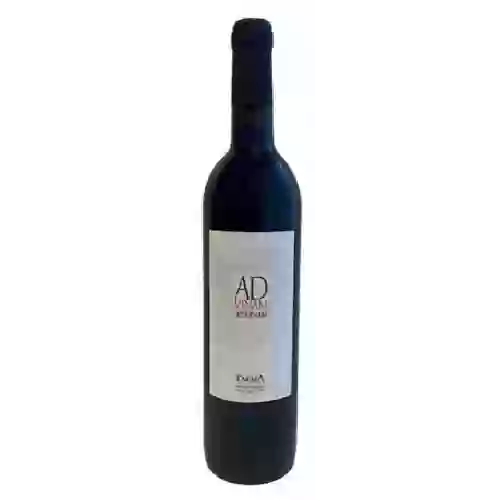The Château de Paraza of Languedoc-Roussillon

The Château de Paraza is one of the best wineries to follow in Languedoc-Roussillon.. It offers 26 wines for sale in of Languedoc-Roussillon to come and discover on site or to buy online.
Looking for the best Château de Paraza wines in Languedoc-Roussillon among all the wines in the region? Check out our tops of the best red, white or effervescent Château de Paraza wines. Also find some food and wine pairings that may be suitable with the wines from this area. Learn more about the region and the Château de Paraza wines with technical and enological descriptions.
How Château de Paraza wines pair with each other generally quite well with dishes of beef, pasta or veal such as recipes of dombrés and pig tails, pho ga (vietnamese chicken soup) or veal paupiettes with white wine.
On the nose the red wine of Château de Paraza. often reveals types of flavors of earthy, earth or red fruit and sometimes also flavors of black fruit, cherry or oaky. In the mouth the red wine of Château de Paraza. is a powerful with a nice balance between acidity and tannins.
Languedoc (formerly Coteaux du Languedoc) is a key appellation used in the Languedoc-Roussillon wine region of southern France. It covers Dry table wines of all three colors (red, white and rosé) from the entire region, but leaves Sweet and Sparkling wines to other more specialized appellations. About 75% of all Languedoc wines are red, with the remaining 25% split roughly down the middle between whites and rosés. The appellation covers most of the Languedoc region and almost a third of all the vineyards in France.
The typical Languedoc red wine is medium-bodied and Fruity. The best examples are slightly heavier and have darker, more savoury aromas, with notes of spice, undergrowth and leather. The Grape varieties used to make them are the classic southern French ones: Grenache, Syrah and Mourvèdre, often with a touch of Carignan or Cinsaut. The white wines of the appellation are made from Grenache Blanc, Clairette and Bourboulenc, with occasional use of Viognier, Marsanne and Roussanne from the Rhône Valley.
How Château de Paraza wines pair with each other generally quite well with dishes of pasta, vegetarian or appetizers and snacks such as recipes of chinese noodles with vegetables and spices, tuna, pepper and tomato quiche or pastels (senegalese stuffed fritters).
On the nose the pink wine of Château de Paraza. often reveals types of flavors of strawberries, mango or red fruit and sometimes also flavors of tropical fruit, earth or watermelon.
Mourvèdre noir is a grape variety originating from Spain. It produces a variety of grape specially used for wine making. It is rare to find this grape to eat on our tables. This variety of grape is characterized by medium to large bunches, and grapes of medium size. Mourvèdre noir can be found in several vineyards: South-West, Cognac, Bordeaux, Provence & Corsica, Rhône valley, Languedoc & Roussillon, Loire valley, Savoie & Bugey, Beaujolais.
How Château de Paraza wines pair with each other generally quite well with dishes of pasta, vegetarian or poultry such as recipes of pasta shells, light tuna-tomato quiche (without cream) or chicken blanquette.
On the nose the white wine of Château de Paraza. often reveals types of flavors of green apple, minerality or earth and sometimes also flavors of tree fruit, black fruit. In the mouth the white wine of Château de Paraza. is a powerful with a nice freshness.
Qualifier of smells close to those of smoked food, characteristic, among other things, of the Sauvignon grape variety; hence the name of smoked white given to this variety.
How Château de Paraza wines pair with each other generally quite well with dishes of veal, pork or game (deer, venison) such as recipes of locro criollo (argentina), homemade pork curry or duck confit.
Mainly cultivated in the Languedoc region, carignan originates from Spain. Because of its very resistant branches, it is often called hardwood. Its bunches are quite large. They are compact and winged with a lignified stalk. The berries are spherical in shape and take on a bluish-black colour. Carignan has a total of 25 approved clones, the best known of which are 274, 65 and 9. The carignan buds at the beginning of June and is protected from spring frosts. It does not reach maturity until the third period. Also, this grape variety needs warmth and sunshine. It appreciates dry and not very fertile soils. Carignan vines can live for more than 100 years. Those that are more than 30 years old produce a better wine. This wine is well coloured. It is generous and powerful at the same time. Pepper, cherry, blackberry, banana, raspberry, almond, prune and violet are some of the aromas that this grape variety gives off.
Planning a wine route in the of Languedoc-Roussillon? Here are the wineries to visit and the winemakers to meet during your trip in search of wines similar to Château de Paraza.
Mauzac is a grape variety, black or white (the white one is better known), originating from the South-West. It is mainly cultivated in the vineyards of Gaillac and Limoux (where it is called blanquette), on about 5,000 hectares. mauzac has medium-sized bunches, composed of berries whose colour can vary from green to red depending on the maturity of the grapes. This grape variety likes limestone and clay-limestone soils, and it is here that it is most productive. Its white wines are fat, with little acidity and marked by aromas of ripe apple, pear, honey, quince, vanilla and violet, typical of the great sweet wines of Gaillac. mauzac also produces the famous Blanquette-de-Limoux in rural method. In this region, Mauzac is competing with Sauvignon, Chenin and Chardonnay, especially for sparkling wines which are more similar to Champagne. It is also used in some appellations such as Entre-deux-Mers, Sainte-Foy-Bordeaux, Côtes-de-Duras, Vins-de-Lavilledieu...